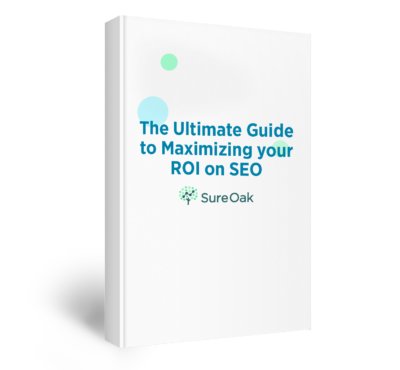In today’s subscription economy, everyone is trying to fix the leaky bucket of customer churn. Unfortunately, current customer retention practices just aren’t cutting it.
In this episode, Nilesh Surana of CustomerSuccessBox shares his take on customer retention and explains why it’s better to be proactive, rather than reactive, when it comes to solving problems your customers have with your products.
Keep reading to get his tips on the ideal customer marketing strategy for encouraging people to invest in upgrades and upsells, rather than your competition.
The Goal of Customer Marketing
The ultimate goal of customer marketing is to retain customers and help them drive the maximum value from your product. In fact, your recurring revenue should actually be more important than new sales. This is because companies that remain relevant to their current customers as those customers grow are much more likely to develop brand advocates and reduce churn.
When marketing to your existing, paying customers, you should aim to do the following:
- Identify users who love your product and develop them into advocates/evangelists by providing recurring benefits. This means your product should provide value to customers at every stage, not just when they sign up for it.
- Retain Customers. Don’t take your current customers for granted. Just because someone is your highest paying customer doesn’t mean they’ll stick with your product for life. Higher paying customers actually need even more reinforcement of your product’s value because they are more likely to churn out than downgrade if your product loses relevance to their needs.
- Identify opportunities for upgrades and upsells. As your customers’ scale, you need to scale with them. This means being proactive in identifying the opportunities for remaining relevant to their evolving needs. Don’t wait until potential issues become actual problems. Utilize the data that’s available about your customers to determine what aspects of your product they aren’t using and how you can make those aspects more valuable.
Customer Acquisition vs. Customer Marketing
In the past, and too often now, companies focus too much on new customer acquisition and not enough on their marketing to current customers. This is where the leaky bucket from earlier comes in. It doesn’t matter how many new customers you bring in to your business if they churn out through the holes in your company “bucket”.
To combat this churn, you’ll want to keep your current customers happy. Traditionally, customer happiness level was determined using net promoter scoring e.g. Would you recommend this product to anyone? Why or why not?. Rather than looking to your net promoter score (NPS), you should adopt the mantra,
“Why ask, when you can measure?”
This is because NPS is a lagging indicator of problems, not a leading indicator. You often won’t learn about issues before it’s too late.
Customer marketing is a journey, so don’t worry if you don’t see immediate results. A successful strategy involves regular experimentation and A/B testing, not just a single outreach effort.
Most Common Upsell Mistakes
As you begin to have a concentrated focus on customer marketing, it’s common to experience some pitfalls. To minimize these snags, avoid making the following mistakes.
- Marketing team not aligned with sales. To have a successful customer nurturing strategy, it’s important to keep your marketing and sales teams on the same page. Alignment is the biggest roadblock to increasing customer upgrades and upsells, and when teams are not aligned properly, marketing often has no clue how each new account is won. Without that knowledge, marketing can’t effectively upsell to current customers or ensure those customers see the success they’re looking for. Ideally, marketing will be on top of the account when the time comes to begin running customer marketing campaigns (which starts as soon as the customer begins using your product).
- Measuring usage of tools but not the value delivered. Every login to your product does not translate value. It’s one thing for a customer to log in to their account. It’s quite another for them to actually use various features. Monitor what features are used and how often, NOT their usage amount.
- Bundling features instead of segmenting customers. Not all of your customers will find every single one of your features useful. This is why it’s important to segment your upsell outreach depending on your customers’ needs and pain points. If you can showcase the positive effect your product can have on those pain points, you’ll be much more likely to get your customers to upgrade.
- Trying to upsell ahead of time. This is a classic mistake. Don’t try to sell and upsell before your customers are ready. Analyze your data so you can be there at the right time when they actually require the upgrade.
- Looking at upgrades/upsells as a one-time campaign. Getting customers to upsell cannot be a one time outreach. You need to proactively nudge your customers to determine their pain points and send the selling part of your campaign at the right time. Outreach and growth need to be continuous.
Customer marketing is the future of successful marketing, so it’s important to include it in your business model. Where do your company practices currently stand? Are you making any of the mistakes outlined above? Let us know!
KEY INSIGHTS
- The end goal of a customer marketing practice is to help customers drive the maximum value from your product.
- Your highest paying customers need constant reinforcement of your product’s value or they are more likely to churn.
- It’s more important to measure the value your tools deliver to customers, rather than how often they’re used. Be proactive in figuring out pain points your customers are experiencing or may experience in the future.
NILESH’S TAKEAWAYS
- Customer marketing is not a one-time campaign. It should be an ongoing effort.
- Getting customers to become advocates for your business is the ultimate customer marketing win.
- As your customers’ scale, you need to scale your product with them to fit their added needs.
MORE FROM NILESH
Podcast: Play in new window | Download





